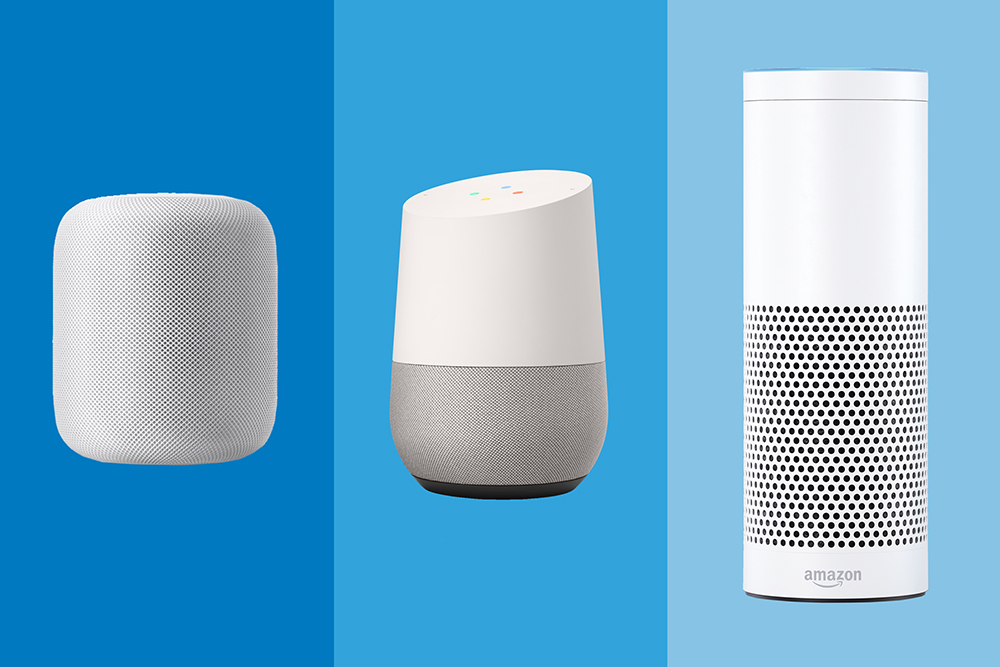 About two months ago, I bought an Amazon Echo Dot (the small one). It was a bit of an experiment and I wasn’t sure how well it was going to be received. Honestly, though, I’ve been surprised at how well the device has integrated into our home and how often we use it on a daily basis listening to music, setting timers and asking random questions (most of which she doesn’t know the answer to).
About two months ago, I bought an Amazon Echo Dot (the small one). It was a bit of an experiment and I wasn’t sure how well it was going to be received. Honestly, though, I’ve been surprised at how well the device has integrated into our home and how often we use it on a daily basis listening to music, setting timers and asking random questions (most of which she doesn’t know the answer to).
The world of smart speakers has been evolving and improving steadily. They exist in a strange non-visible, non-show-off-able, world since you don’t carry them around like a phone, or a laptop or a tablet.
These speakers have been silently taking the world by storm, convincing skeptics of their value and now we’re beginning to notice their influence in other areas outside of the home.
But what are these gadgets? What do they do? And how could these in-home, always- on devices be used by brands as part of their marketing strategy?
Firstly, a quick explanation of the main players….
Amazon Echo
Amazon’s has been at the digital assistant hardware game for quite a while at this stage. Their line-up now spans five variations including speakers, speakers with cameras and one with a touch-screen, speaker and camera.
One huge component of the success of Amazon Alexa has been down to the ‘Skills’; third-party developed micro-apps that can be enabled on the device of which there are 11,000. The functionality of these range from sports and news updates to smart home control and online ordering.
The effectiveness of the Alexa system to understand spoken requests regardless of how they are phrased makes this a properly intuitive system to interact with.
Google Home
Although Amazon had a head-start over the competition, many felt they were missing a piece of the puzzle: integration. The range only has limited ability to integrate with a user’s phone or desktop device.
Google Home mirrors nearly all of the functionality of the Echo but with the added benefit of linking in their own services – mail, calendar, maps and search right into the core. One neat trick is that the device can recognise the person making a request and can provide contextual responses accordingly, something Alexa has yet to master.
Apple HomePod
Apple has recently arrived, extremely late, to the party with a meagre offering that does little to challenge the main players. It remains to be seen how their speaker will fair in the future, but for now it’s not worth giving it much attention.
What does this mean for marketing?
As these devices become more mainstream in use they will change how users feel about interacting with devices through natural language. It might feel odd talking to a machine at the beginning (remember when we thought taking a picture with a phone was a strange idea?) but has the potential for revolutionary, touch –free, convenience.
With this new-found freedom afforded by spoken interactions we will enter the “post-app” era. Soon enough the average consumer will no longer feel the need to interact with a screen to carry out a task or retrieve information. Our requests will be correctly interpreted and actioned as intended every time – no longer any need to slow down your speech or put on a posh English accent to be understood.
And it is this idea of simply asking for something, and getting it instantly that is the game changer for brands.
Companies such as Uber, PizzaHut and JustEat have already launched branded integrations with both Alexa and Google Home – just tell them you need an Uber cab or a pepperoni pizza from Pizza Hut and it will appear – and it is likely that this trend will continue as online brands discover the potential to fulfil a request from a customer simply by them having spoken it. The sooner appropriate brands get on board and utilise this frictionless, barrier-free tech for their marketing purposes, the more established and familiar they become – and the more likely they are to be used. Early adopters can definitely reap rewards.
As a creative communications agency, it’s our job to advise, inspire and guide our clients through any type of marketing and communications newness. In this case to understand how these “Skills” might best be applied in different scenarios, how their use may or may not integrate with their overall digital marketing strategy, and how it might assist their specific business goals. Seeing a product advertised on TV or whilst flipping the pages of a glossy magazine review, and telling Alexa to buy it for you or add it to your weekly grocery shop? How’s that for an impulse-buy marketing hole-in –one, and a brand manager’s bullseye? You just might need to de-activate the kid’s voice recognition if you don’t want your living room filled with fidget spinners, squashies, and your bank account drained….
This doesn’t mean our Developers will suddenly need to diversify their skills into the creation of Alexa apps, or that our clients should jump on the bandwagon just for the sake of it. Some platforms just aren’t right for some brands. (QR codes, anyone?)
Like any ‘new’ tech that has commercial potential for a brand, we need to dig deep, understand possible applications. The software underpinning this technology spans artificial intelligence, machine learning, eCRM and micro-services – to name but a few – so there are quite a number of elements that need to be lined up before we would junp feet-first or push a client that direction. But the good news is that many providers are coming on-line that are making the process more manageable and user friendly – not least Amazon and Google themselves!
Digital innovation has always been at our core, and as more and more of our work is in the realm of creative technology application and content creation for our client brands, this new area for marketers and brands both fascinates and excites all of us to the possibilities.
Eamonn Rohan is Creative Technologist at McCannBlue and can be contacted at Eamonn.Rohan@mccannblue.ie
First published in Irish Marketing Journal (IMJ June 2017)© to order back issues please call 016611660





















